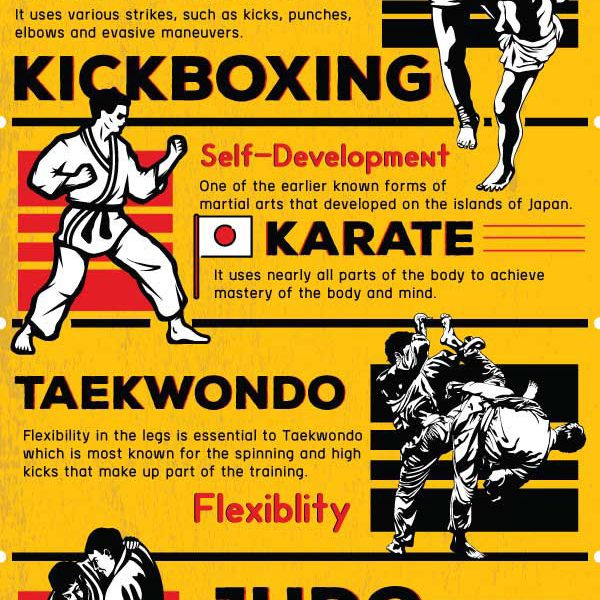Exactly How Do Typical Martial Arts Emphasis On Self-Control Contrast To Modern Fight Sporting Activities Focus On Competition? Discover The Essential Distinctions That Can Form Your Trip
Exactly How Do Typical Martial Arts Emphasis On Self-Control Contrast To Modern Fight Sporting Activities Focus On Competition? Discover The Essential Distinctions That Can Form Your Trip
Blog Article
Writer-Valentine Haagensen
When you think about martial arts, do you lean much more toward the traditional practices or the modern fight sporting activities? Each course uses unique advantages and experiences, shaped by their approaches and training methods. Traditional martial arts stress personal growth and discipline, while contemporary fight sports concentrate on competition and performance. Understanding these distinctions can assist you in selecting the best technique for your trip. But just how do these differences show up in training and viewpoint?
The Approach and History Behind Typical Martial arts
While many people associate martial arts with physical combat, the viewpoint and background behind conventional martial arts run much deeper. You'll locate that these techniques emphasize personal growth, discipline, and regard.
Stemming from old techniques, traditional martial arts were commonly established for Self-Defense and spiritual development. They symbolize concepts such as equilibrium, harmony, and self-control, leading practitioners beyond mere fighting abilities.
As you train, you'll not just find out techniques but also acquire understandings right into the society and values that formed these arts. The routines and practices, typically passed down through generations, promote a feeling of community and belonging.
The Affordable Nature of Modern Battle Sports
Modern combat sports have actually transformed the landscape of martial arts right into a very affordable field, where professional athletes take on in a test of ability, technique, and endurance.
You'll notice that competitors are frequently arranged with stringent guidelines and laws, guaranteeing justice and safety. These occasions attract large target markets, sustaining the exhilaration and intensity of competitions.
Professional athletes train rigorously, not just for physical prowess yet likewise for mental sturdiness, understanding that every information counts in the ring. karate near me during competitions is apparent, as boxers press their restrictions to declare triumph.
Followers value the athleticism and virtuosity involved, making modern battle sports a thrilling spectacle that remains to progress and mesmerize enthusiasts all over the world.
Training Methods and Techniques: A Comparative Evaluation
The affordable atmosphere of modern battle sporting activities needs cutting-edge training techniques that vary considerably from traditional martial arts.
In modern training, you'll concentrate on particular techniques, sparring, and conditioning, typically utilizing drills that mimic genuine fight scenarios. You'll see an emphasis on quantifiable performance and regular competition to analyze your skills.
In contrast, conventional martial arts focus on forms, katas, and thoughtful mentors, commonly stressing technique and respect over competition.
pop over to this website is normally less intense and might include recurring practice as opposed to real-time sparring.
While both approaches develop skill and health and fitness, contemporary combat sporting activities supply an extra dynamic and adaptable training atmosphere, preparing you for immediate obstacles in the ring or cage.
Select the path that aligns with your objectives and rate of interests.
Verdict
In choosing between typical martial arts and modern battle sporting activities, it actually boils down to what you value the majority of. If what are the best martial arts trying to find individual growth, discipline, and a feeling of area, traditional arts might be your best fit. Yet if you grow on competitors and real-time difficulties, modern fight sporting activities could be the method to go. Ultimately, both courses provide distinct benefits, so it's all about aligning your training with your personal goals and interests.
